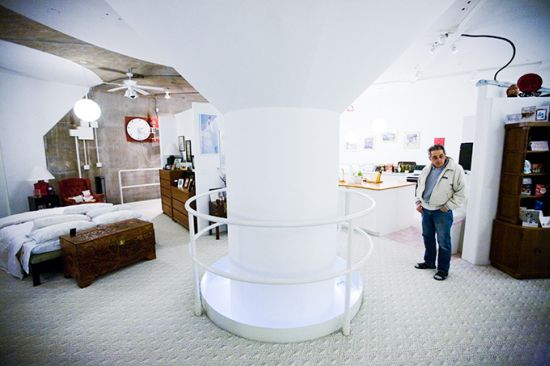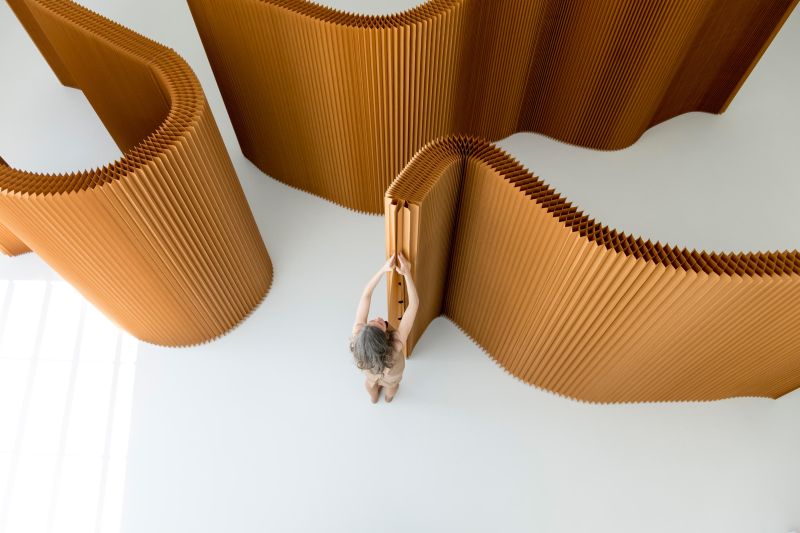
Bruce Townsley bought his missile base property from Ed Peden, who is a missile base real estate mogul. He thought that it might be one project that would be challenging after completing his several remodeling projects. Townsley bought a Atlas F site with the help of Peden. In Atlas F site missile was stored vertically in a underground silo. He bought the place in 1997 for $99,000 and went on to build his home. When he bought the place there were two doors that covered the 185 foot hole, which stored the missile. Now, he has managed to get one of the doors working. He took a loan against his truck to build a bracket that could open the door and a rented crane combined with the help of some local volunteers came in quite handy.
There are lot of stairs that take him down to the first level of the house. This staircase ends at a set of 6,000 pound blast doors, which were designed to keep the occupants safe during an attack. An added safety feature that time was the white latticed debris door, which was hung, so that the materials in explosion didn’t make it to the control room. All these doors are still fully functional. These doors are magnanimous in terms of size and precision.

The living space of the house is spread over 1, 100 square feet area and is completely round. The room, which was like a suspended concrete bubble, earlier floated on springs, so that it could move up-down and side to side. This feature helped it absorb the blast. Now, some of the springs have been replaced by the poles, so that it can only swing side to side. Every room of the structure revolves around the central pillar and every room is separated with the help of short partitioned walls that he has built.

Another staircase leads down to the second floor that is similar to the main room in shape and size. This part has bathroom installed in it. Another large feature of the house is 185 foot deep missile silo and to get to it, you need to go through another set of blast doors and a steel tunnel. Earlier this tunnel would lead to the missile. This missile was held in a place with scaffolding that was necessary because Atlas missiles were aluminum shells filled with fuel, having no framework.
This tunnel exits at about two-thirds of the way, leading to the top of the silo. He has hung a steel cable around a platform as a protection against falling further deep in the silo. The hallway from the missile silo to the bunker is lined with heavy blast doors. These doors were there to keep the occupants safe, as these were curved inwards. This curved feature would help offset the pull of vacuum created by an explosion, which would keep the door from flinging outwards. However, most of the Atlas Fs failed and exploded in their silos. This failure exposed one problem with heavy steel doors .i.e. these doors were not quite the protection, both sets of blast doors would blow in during the explosion. The graffiti is also visible inside at various places, which must have been made by teens who might have ventured into the base for some amusement. Building this home has been really challenging for him and he wishes to play it further to give it a real feel.
Via: Wired




